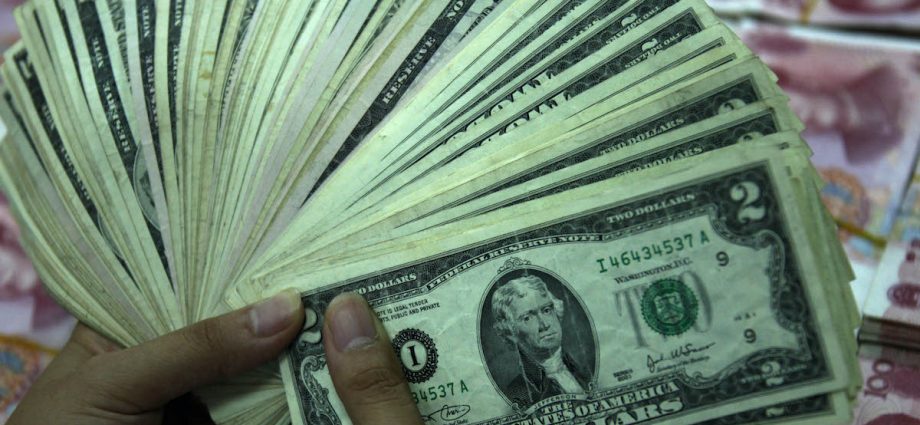
There is undeniable excitement about challenges to the American dollar’s position as the global reserve currency.
While economists have warned for years that the dollar’s dominance shouldn’t be a foregone conclusion, few have paid close attention to the warnings, especially in the halls of American power.
After Russia invaded Ukraine and US sanctions failed to deliver a decisive blow against the Russian economy, new questions emerged about how the global economy grew beyond America’s grip.
These discussions have reached a fever pitch in debates about the creation of a BRICS currency. The BRICS – a grouping of the economies of Brazil, Russia, India, China and South Africa – represents an alternative to Western-controlled international organizations such as the World Bank and International Monetary Fund.
Together, these economies represent a vast swath of the global economy, and their influence extends to areas beyond the American purview in the Global South. Creating a shared currency in these economies would upend international trade and represent a clear challenge to the dollar as the world’s reserve currency.
But this article isn’t about a BRICS currency, because we are far from its creation. Instead, we must recognize that discussion about a BRICS currency overshadows more significant developments quietly chipping away at the dollar’s current dominance.
This month, India and the United Arab Emirates agreed to use their local currencies for cross-border transactions. On the surface, this might not seem particularly important. Countries trade in their local currencies all the time. However, this small development is laying the foundations for dramatic changes in the near future.
Trade between India and the UAE is booming. From April 2022 to March 2023, bilateral trade was US$84.5 billion. Oil drives this, as India is one of the world’s largest oil importers and consumers.
The UAE is also the second-largest source of remittances for India. Remittance payments – money sent back home by Indians working outside the country – are vital to the Indian economy. In the 2021-22 fiscal year, India received close to $90 billion in remittance payments, the highest on record for the country.
Disempowering the petrodollar
Remittance payments and oil sales have been conducted in US dollars for decades, but with the new focus on trading in local currencies, there is a clear shift away from the dollar. One official told Reuters that India is preparing its first rupee payment for Emirati oil to the Abu Dhabi National Oil Co in the coming months.
Part of the power of the US dollar as a global reserve currency is how it is used for transactions between countries like the UAE and India. This is especially clear in the oil trade, given that oil is almost universally traded in dollars.
If the US wants to punish the geopolitical decisions of other countries like Russia, it can exercise its control over the dollar in the oil trade. This is one reason China has been actively investing in Saudi Arabia.
As part of its years-long push to break the oil trade’s reliance on dollars and shift it to the yuan, China has been on a charm offensive in Saudi Arabia. China has even floated the idea of a free-trade agreement between the two nations, attempted to buy a minority stake in Saudi Aramco, and welcomed the kingdom’s multibillion-dollar investments in China.
The closeness of the relationship has worried the US, but President Joe Biden’s administration has proved unable or unwilling to stop China and Saudi Arabia from moving closer together.
Saudi Arabia has also been leveraging its position as a primary supplier of crude oil to India for its geopolitical ambitions of carving out a genuinely independent foreign policy.
These developments might seem small taken by themselves, but viewed together, it’s clear that a profound shift is taking place in the global economy. Without the creation of a BRICS currency, major economies of the Global South are forging partnerships that will allow them to move their economies off the US dollar.
In another part of the world, Brazil and Argentina are discussing the creation of a common currency. While these plans might seem pie in the sky right now, a foundation is being laid that will seriously challenge the dollar’s dominance.
The US needs a new strategy to contend with these challenges coming down the pike, and so far, it’s hard to detect one in Washington.
It’s essential to see the forest beyond the trees. The dollar isn’t going to be killed off by one contender currency like a BRICS currency. It will lose its power and dominance thanks to small steps taken by countries that prefer to determine their affairs without the influence of a global reserve country.
As the world’s second-largest economy, China is helping other countries like Saudi Arabia push their visions for global power. It’s all happening in real time. You just have to look at the details.
This article was provided by Syndication Bureau, which holds copyright.

